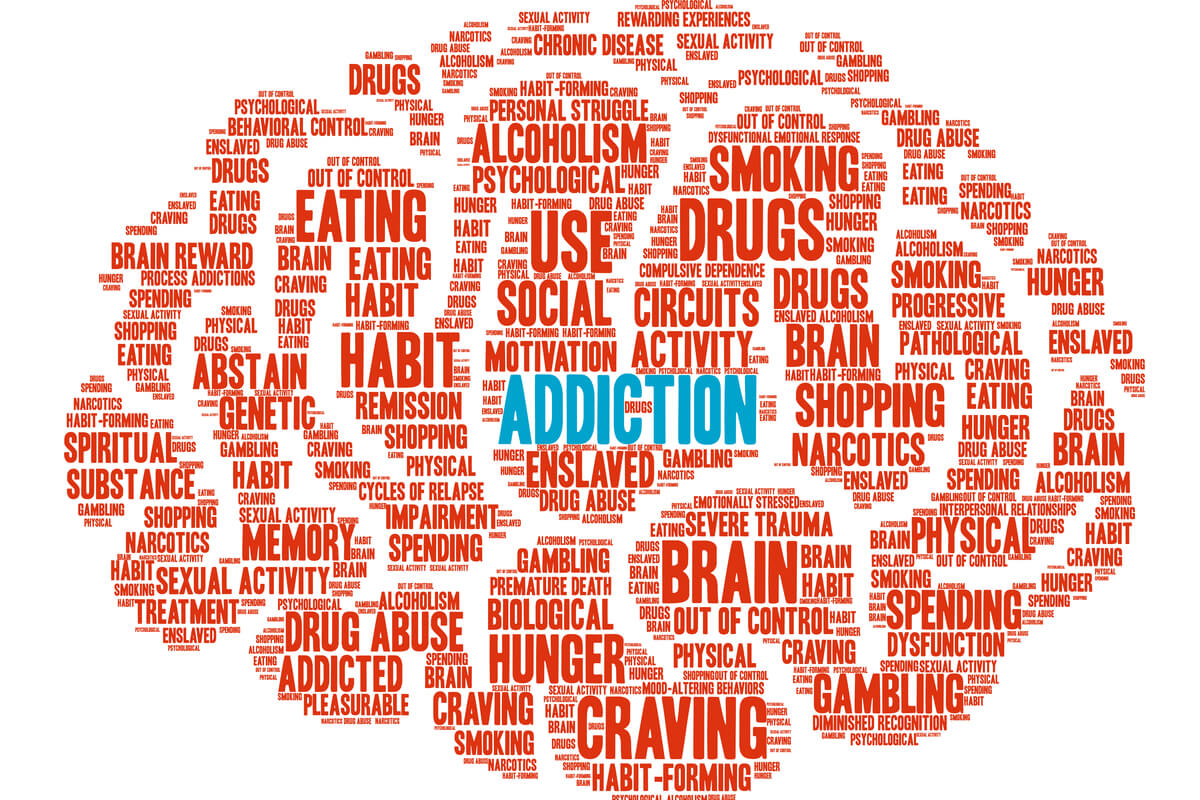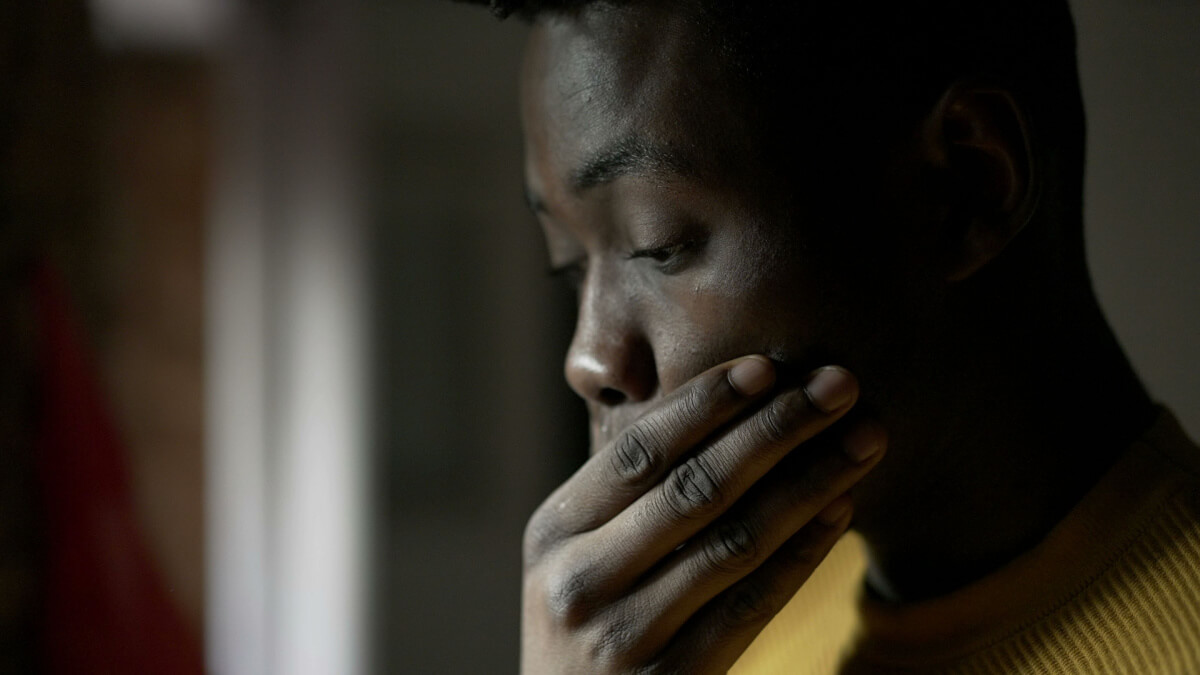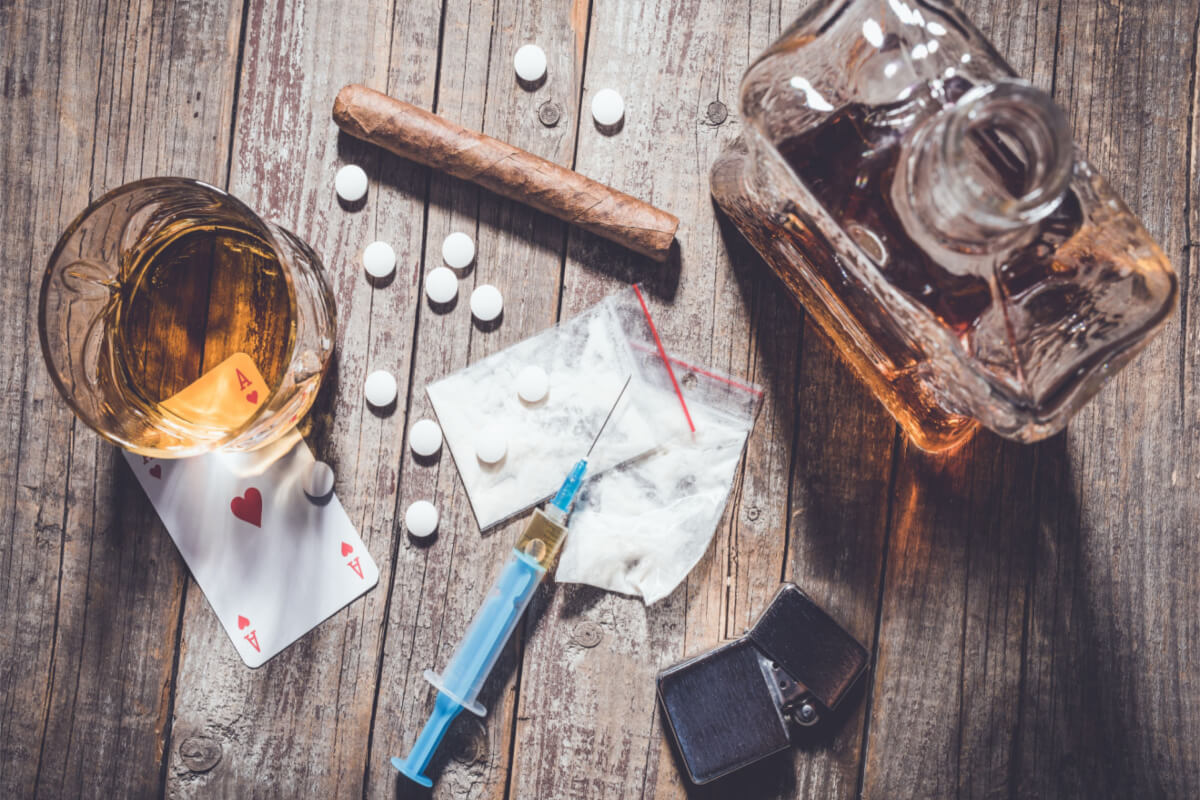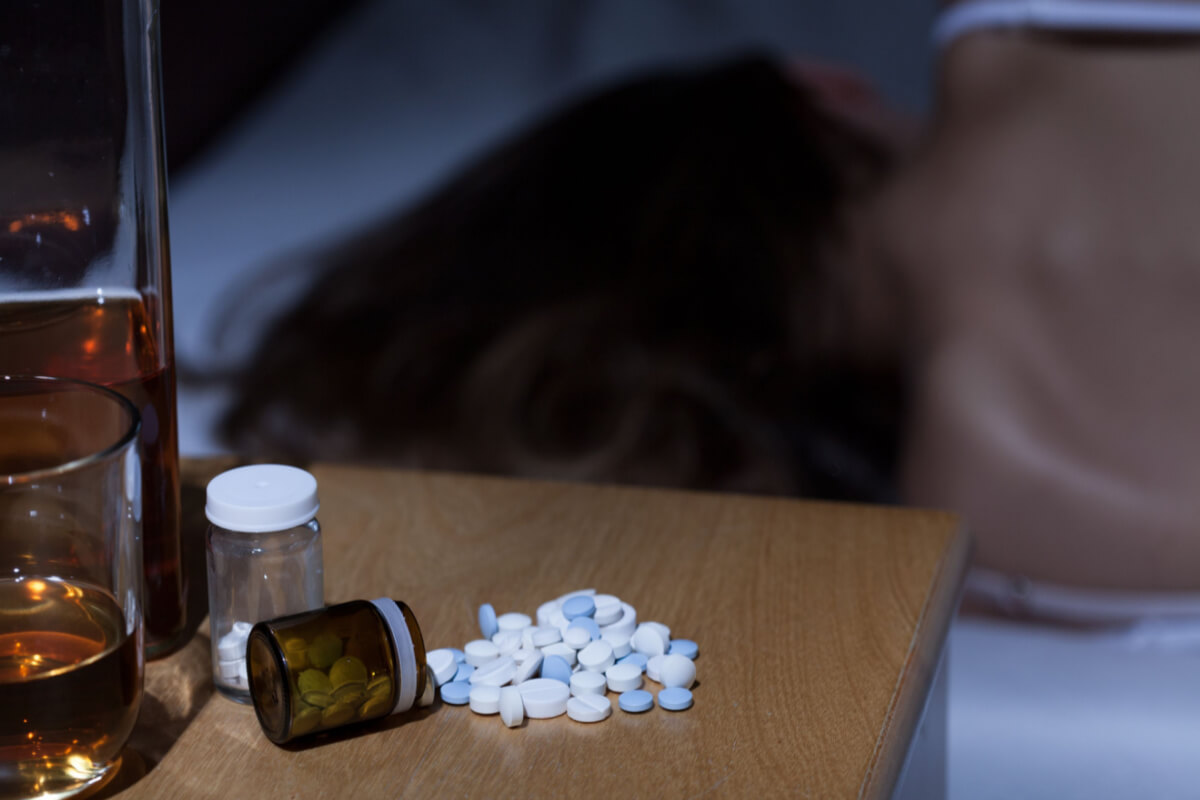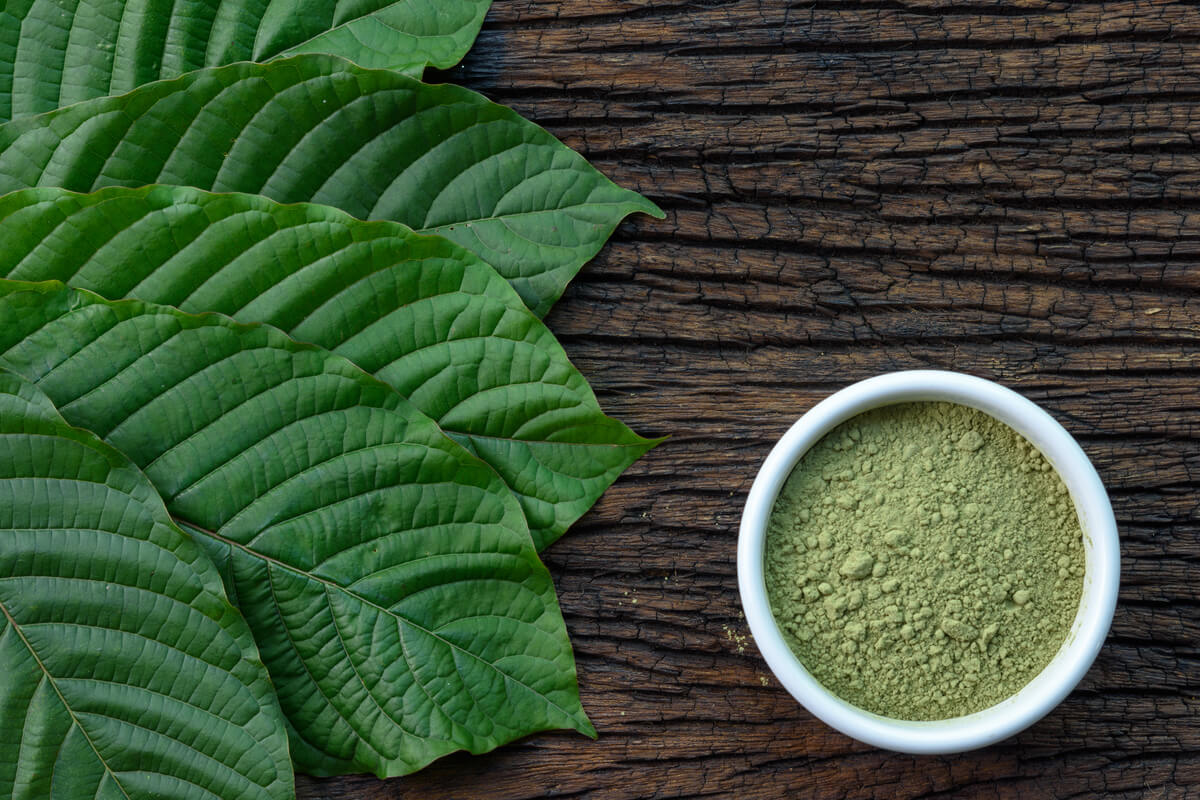It really depends. Each time you take a sip of alcohol, your liver works to process the toxins in that alcohol. Over time, this puts stress on the liver that can lead to either temporary or permanent damage to the liver.
It is not known exactly how much or how long you have to drink to develop permanent liver damage. Liver damage is highly variable among individuals and can develop quickly in some and quite slowly or even not at all in others, regardless of how much they drink.
In general, however, the longer and more heavily one drinks, the more likely to ultimately develop liver damage. One study found that more than 30 grams of pure alcohol per day increases your risk of liver disease.[1] That works out to more than about two drinks per day.
About 5% of heavy drinkers develop cirrhosis of the liver, which is the most advanced and irreversible form of liver damage.[2]
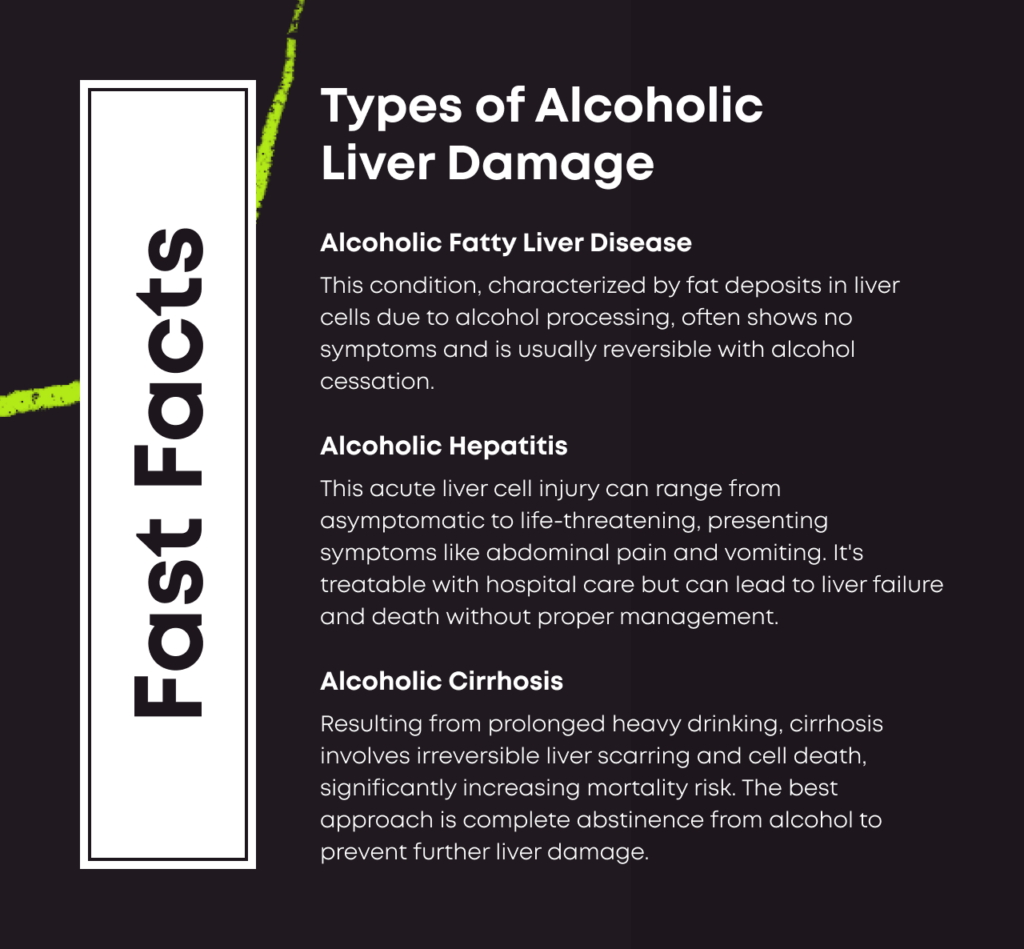
Different Types of Alcoholic Liver Damage
Many people with liver disease have no symptoms at all, including people with advanced cases of cirrhosis.[3] This is why liver disease can be particularly dangerous, because the complications are silent until the damage is already quite advanced in many cases. There are 3 different types of damage that can occur to the liver from alcohol use. These different types can occur in any order, and an individual can have one or all of these conditions simultaneously.
1. Alcoholic Fatty Liver Disease
Liver cells working hard to process alcohol put down fat deposits. Even a few days of hard drinking can cause this form of liver disease. You may have no symptoms at all with this form of liver disease. Oftentimes, doctors can see this liver disease on an ultrasound or CT scan of your liver. If seen, you can be counseled by your doctors to stop drinking. This form of liver disease is often entirely reversible with alcohol cessation.
2. Alcoholic Hepatitis
Hepatitis refers to acute injury to the hepatocytes, or the cells of your liver. This can be asymptomatic but can also be associated with abdominal pain, vomiting, dehydration and acute liver failure, which can be life threatening. Hepatitis is often treatable in the hospital with supportive care such as fluid administration and careful monitoring. Alcoholic hepatitis will often resolve on its own with this care, but can sometimes worsen and cause liver failure and death, which is why you need to be carefully monitored.
3. Alcoholic Cirrhosis
After heavy drinking for a longer period of time, patients develop fibrosis and scarring of the liver and permanent death of the liver cells (hepatocytes). This is called cirrhosis, and is a sign of advanced liver disease. Cirrhosis is largely irreversible, meaning the damage is permanent and can lead to death. Patients with cirrhosis have very high mortality rates. Thus, the best treatment for this complication is to avoid drinking entirely to prevent further damage to the liver.
How Many Years of Drinking Does it Take to Get Liver Damage?
The short answer is, we don’t know. It is very difficult to predict how much drinking will result in liver damage because it is so variable between individuals.
Regularly drinking (defined as more than three standard drinks for men and two standard drinks for women per day) increases your risk of liver disease.[6] But your time frame — how long you can drink heavily before getting liver damage — can vary significantly.
Researchers say the speed with which you develop liver problems depends on the following:[7]
- Body composition
- Age
- Drinking experience
- Genetics
- Social factors
- Gender
Your drinking patterns matter too. People who drink at least 80 g of alcohol daily for more than 10 years have almost a 100% risk of developing some degree of liver disease.[8] But people who binge drink for only seven weeks can develop early forms of liver disease.[9]
In short, some people can drink heavily for years without developing liver damage, while others can drink for a comparatively shorter period of time and to a lesser degree and still develop liver damage or even liver failure. We know that any amount of alcohol increases the risk of liver damage and disease, and is always something to be cautious of if you are a regular consumer of alcohol.
How Is Alcohol Liver Disease Treated?
The U.S. Food and Drug Administration hasn’t approved any drugs to reverse the damage to the liver from alcohol. If you’ve harmed your liver and it’s no longer working, the ultimate treatment is a liver transplant.[4] However liver transplants can be very hard to get, particularly in patients that are still actively drinking.
At this point in time, the best treatment for alcohol liver disease is to avoid getting it all together. Patients with early disease such as fatty liver, or more acute disease such as alcoholic hepatitis, should think seriously about their risks and decrease or even eliminate alcohol use altogether to prevent the development of cirrhosis, which is the final and irreversible stage of liver disease.
Liver Damage & Alcohol FAQs
Any amount of alcohol can cause liver damage. Drinking more than two drinks per day consistently increases your risk of liver disease. However, the degree of liver damage varies greatly between individuals and there is no “safe” amount of alcohol to drink that cannot potentially cause liver disease.
It depends. Early stages of liver damage can be treated, but late stages are irreversible and can only be addressed via a liver transplant.
The three types of liver disease are fatty liver disease, alcoholic hepatitis, and cirrhosis.
People with serious liver damage have usually been drinking for 20 or more years. But complications can develop after 5 to 10 years of heavy drinking. Again, this can be highly variable between individuals and is likely genetic.
Early signs of liver damage from drinking include unexplained weight loss, lack of appetite, fatigue, nausea, vomiting, and abdominal swelling.
Yes, consuming two drinks a day consistently can damage your liver. Binge drinking episodes can cause further harm.
A doctor can perform a liver function test to assess the health of your liver. This test will measure liver enzymes, bilirubin, and proteins. They can also assess the degree of liver damage by getting a scan – often an ultrasound or a CT scan – of your liver.
Stop drinking. Get a doctor’s help to do this safely. Then, make healthy lifestyle changes that support your overall health. Prioritize restful sleep, a nutritional diet, proper hydration, and regular exercise.

Reviewed By Peter Manza, PhD
Peter Manza, PhD received his BA in Psychology and Biology from the University of Rochester and his PhD in Integrative Neuroscience at Stony Brook University. He is currently working as a research scientist in Washington, DC. His research focuses on the role ... Read More
- Alcoholic Liver Disease. World Journal of Hepatology. https://www.ncbi.nlm.nih.gov/pmc/articles/PMC3321494/. March 2012. Accessed May 2022.
- Alcoholic Liver Disease: Dose and Threshold. Gut. https://gut.bmj.com/content/41/6/857. December 1997. Accessed May 2022.
- Alcohol-Related Liver Disease. National Health Service. https://www.nhs.uk/conditions/alcohol-related-liver-disease-arld/. August 2018. Accessed May 2022.
- Alcoholic Liver Disease: Pathogenesis and Current Management. Alcohol Research and Current Reviews. https://www.ncbi.nlm.nih.gov/pmc/articles/PMC5513682/. 2017. Accessed May 2022.
- Alcohol-Related Liver Disease. American Liver Foundation. https://liverfoundation.org/for-patients/about-the-liver/diseases-of-the-liver/alcohol-related-liver-disease/#information-for-the-newly-diagnosed. May 2022. Accessed May 2022.
- Arab J, Roblero J, Altamirano J, Bessone F, Araujo R, De la Tijera F, et al. Alcohol-related liver disease: Clinical practice guidelines by the Latin American Association for the Study of the Liver. Annals of Hepatology. 2019;18(3):518-535. https://www.sciencedirect.com/science/article/pii/S1665268119300419
- Alcohol-related complications. Canadian Liver Foundation. Accessed August 7, 2023. https://www.liver.ca/patients-caregivers/liver-diseases/alcohol-related-complications/
- Bruha R, Dvorak K, Petrtyl J. Alcoholic liver disease. World J Hepatol. 2012;4(3):81-90. doi:10.4254/wjh.v4.i3.81
- Farley P. Binge drinking may quickly lead to liver damage. University of California San Francisco. Published January 19, 2017. Accessed August 7, 2023. https://www.ucsf.edu/news/2017/01/405561/binge-drinking-may-quickly-lead-liver-damage
Download Our Free Program Guide
Learn about our program, its effectiveness and what to expect
Related articles
Imagine what’s possible on the other side of opioid use disorder.
Our science-backed approach boasts 95% of patients reporting no withdrawal symptoms at 7 days. We can help you achieve easier days and a happier future.

